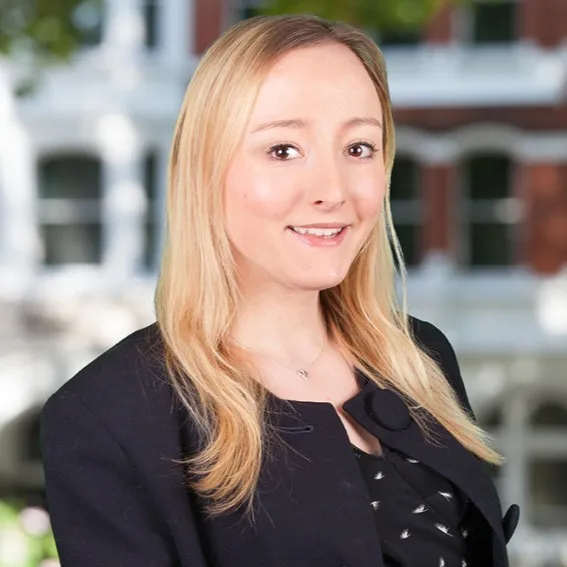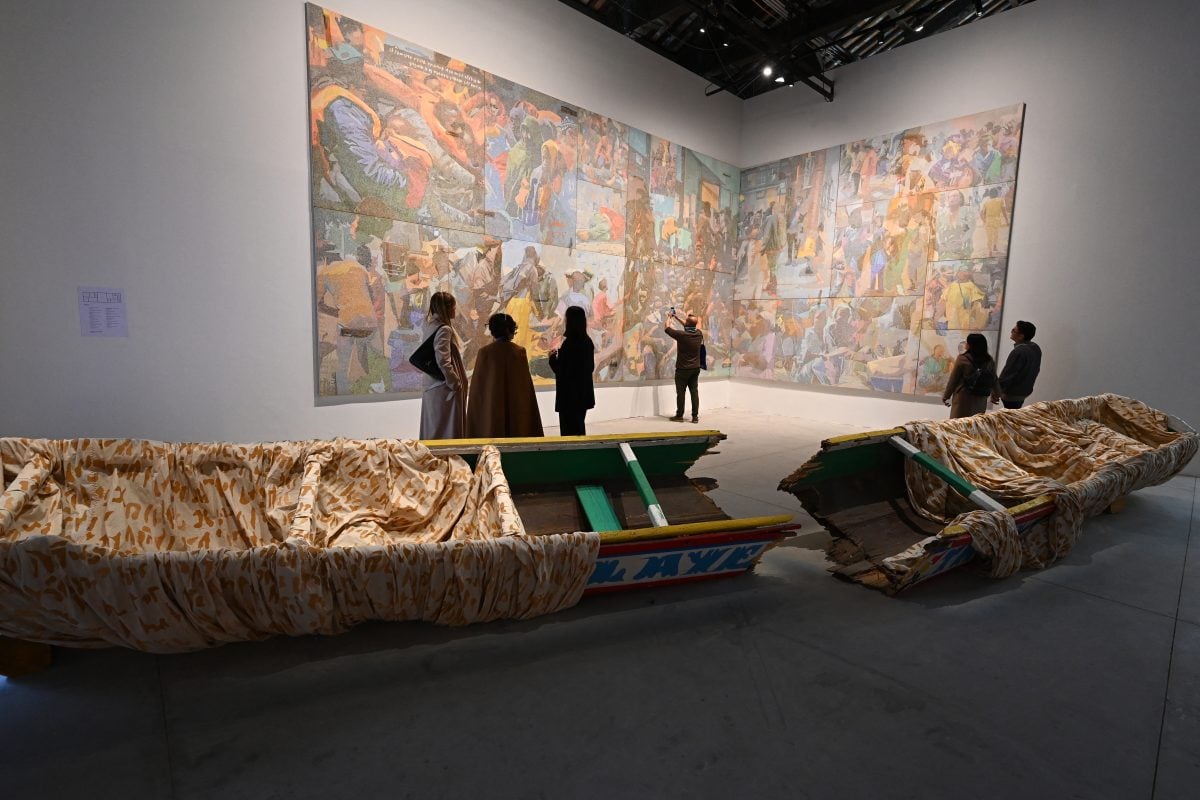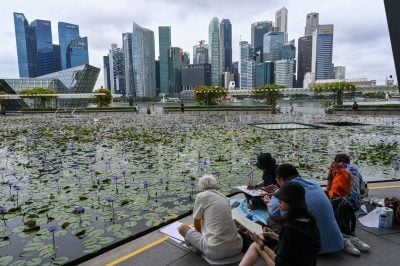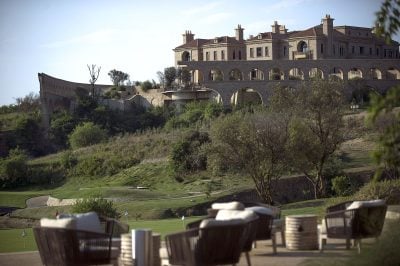All eyes are on Venice as the city unveils its 60th contemporary visual art exhibition. The Art Biennale, the Biennale d’Arte di Venezia, runs from April to November. It is one of the most prestigious and longest-running of its kind in the world, and features a central exhibition curated by an artistic director, national pavilions hosted by participant nations, and independent exhibitions throughout Venice.
This 60th edition is curated by Adriano Pedrosa, the artistic director of the Museu de Arte de São Paulo Assis Chateaubriand, who was recently the 2023 recipient of the Audrey Irmas Award for Curatorial Excellence. “I am honoured and humbled by this prestigious appointment,” says Pedrosa, “Especially as the first Latin American to curate the International Art Exhibition, and in fact the first one based in the southern hemisphere.”
Rethinking representation
The Art Biennale’s outgoing President, Roberto Cicutto, recognises that the Art Biennale traditionally demonstrated biases in prioritising displays by western artists. He may soon be departing from the role, but in a speech given earlier this year Cicutto maintained his pride in the growth of the national pavilions that he had overseen over the past four years. The national pavilions host the official representation of each participating nation during the Art Biennale.
Throughout the twentieth century countries including Japan, Uruguay, and Australia constructed their own pavilions. This year the number of international pavilions has reached 90. Cicutto believes that these “make La Biennale a unique meeting ground between the arts and the changes in society”.
The 2024 Art Biennale has seen the debut of multiple African nations represented in their own international pavilions, and the largest-ever number of African countries represented. Benin, Tanzania, Senegal, and Ethiopia are each displaying artworks in their own pavilions for the first time. They are joined by Nigeria, Gabon, Ghana, Namibia, South Africa, Seychelles, Uganda, Madagascar, Cameroon, Côte d’Ivoire, Kenya, Zimbabwe, and Egypt – all of which have presented at Venice Art Biennales in previous years.
‘Foreigners Everywhere’
Fittingly, the theme of this year’s Art Biennale is Foreigners Everywhere, a phrase drawn from a series of works by the Palermo-based Claire Fontaine collective. Those works consist of neon sculptures that render these words in multiple languages. Curator Adriano Pedrosa explains that the theme was chosen to highlight the discrimination that indigenous and non-white artists and their works continue to face in the global art space.
Speaking to African Art magazine, artist Tesfaye Urgessa, representing Ethiopia, stated that while creating his abstract exhibition Prejudice and Belonging he considered the question “How long does it take for a foreigner to achieve a sense of belonging?”
Urgessa’s exhibition explores themes of displacement, immigration and cultural identity, aptly fitting the 2024 Art Biennale theme. His oil paintings, boldly designed with stark, modernist brushstrokes, place black bodies in the foreground of domesticity.
Urgessa’s piece The Holy Family Despair portrays a couple cradling a young baby, their legs entwined and their faces conflicted with emotion. The scene is at once very real and very surreal, and deliberately evokes an uncomfortable sense of voyeurism for the viewer. “By creating an atmosphere where the audience feels under scrutiny, I hope to prompt introspection and reflection on the nature of perception and judgement,” Urgessa says.
“My intention is to encourage viewers to confront their own biases and prejudices as they engage with my artwork.”
Also keen to challenge injustice and wrongdoing through the medium of art, Azu Nwagbogu, curator of the Benin pavilion, has created an exhibition that showcases the country’s history through art. The exhibition features works under the theme Everything Precious is Fragile by four contemporary Beninese artists: Romuald Hazoumè; Chloé Quenum; Ishola Akpo; and Moufoli Bello.
“This theme provides a lens through which we can navigate tragic historical events, such as the transatlantic slave trade and resistance to it through the bravery of Agojie,” Nwagbogu says, referring to Benin’s elite female warriors in an interview with Art Review. “Through the exhibition we challenge the epistemic injustice of the silencing of indigenous voices world over.”
Socially engaged
Another socially engaged artist whose work is rooted in exploring the challenges facing the African continent is Alioune Diagne, whose work, created in collaboration with Massamba Mbaye, an art critic, curator and historian specialising in communication theories, is displayed in Senegal’s inaugural pavilion.
The unique exhibition comprises a selection of paintings displayed to resemble a jigsaw puzzle. Diagne says these represents joyful scenes of daily life in Senegal, alongside the major challenges the world is facing, from gender inequality to racism. The Tanzanian pavilion, curated by Enrico Bittoto, features works by artists Happy Robert, Naby, Haji Chilonga and Lute Mwakisopile in an exhibition called A Flight in Reverse Mirrors.
Art Review reports that, in keeping with the theme the exhibited works explore travel, migration, nomadism, and the transformations imposed by environmental changes. They include paintings and woodcuts. OkayAfrica calls the country’s debut “a thought-provoking showcase of creativity”.KerunenArt Review reports that, in keeping with the theme the exhibited works explore travel, migration, nomadism, and the transformations imposed by environmental changes. They include paintings and woodcuts. OkayAfrica calls the country’s debut “a thought-provoking showcase of creativity”.
This is a second outing at the Venice Art Biennale for Ugandan artist Acaye Kerunen – her work was displayed at Uganda’s inaugural pavilion in 2022. This year she returns as curator of the 2024 pavilion, which received a special mention for national participation at the Art Biennale’s Golden Lion award ceremony on 23 April.
Speaking to Ocula, Accaye calls her exhibition “an intergenerational pavilion” that brings together artists “from over 70 years old to just over 30, focused on community and intergenerational trauma, that interrogates prevailing narratives that serve to construct and maintain hierarchies of art creation”.
The exhibition, titled Wan Acel, is comprised of works made from recycled paper beads, bark cloth, bamboo, upcycled wedding gowns, rubber and watercolours. Some of the works formed part of a choreographed audience-participatory parade through the centre of Venice at the grand opening of this year’s exhibition. A booming presence in Venice Africa’s booming presence at the 2024 Venice Art Biennale includes representation within the pavilions of countries such as the UK and the Netherlands that showcase African and diasporic perspectives. It stands in stark contrast to the continent’s previous poor representation.
Egypt established the first – and, to this day, only – permanent African pavilion in 1952. During the 1990 Art Biennale the representation of artists from the continent was so negligible that presentations by Nigeria and Zimbabwe were grouped together as “The African Countries Pavilion”.
In 2013, however, Angola’s debut garnered the Golden Lion Award for best national pavilion. The Venice Art Biennale’s national pavilions serve as catalysts for change in the art world, challenging existing paradigms and reshaping the narratives of contemporary art.
With each successive two-yearly event the voices of artists from across Africa grow, resound and resonate, as the Art Biennale continues to embrace the richness and diversity of Africa’s cultural heritage, rightfully placing a multitude of talented artists from across the continent firmly front and centre of the global art world.
Want to continue reading? Subscribe today.
You've read all your free articles for this month! Subscribe now to enjoy full access to our content.
Digital Monthly
£8.00 / month
Receive full unlimited access to our articles, opinions, podcasts and more.
Digital Yearly
£70.00 / year
Our best value offer - save £26 and gain access to all of our digital content for an entire year!

 Sign in with Google
Sign in with Google 



